In this article, we will explore trees in the Bible and where these trees are located in scripture, what type, and what can represent symbolically and spiritually to believers.
If you have been around my site for a while, you know I love digging deep into specific topics; some may seem not very interesting. But the thing is, when you start studying, it’s like an explosion of spiritual insight. And that’s what happens when you study trees in the Bible.
In the Bible, trees are mentioned numerous times throughout the Old and New Testaments. and they even can carry symbolic and spiritual significance. Trees are used to illustrate moments of decision and testing for humans, as well as moments of communion with God. They are often used to represent life, growth, and prosperity.
But more on that later…
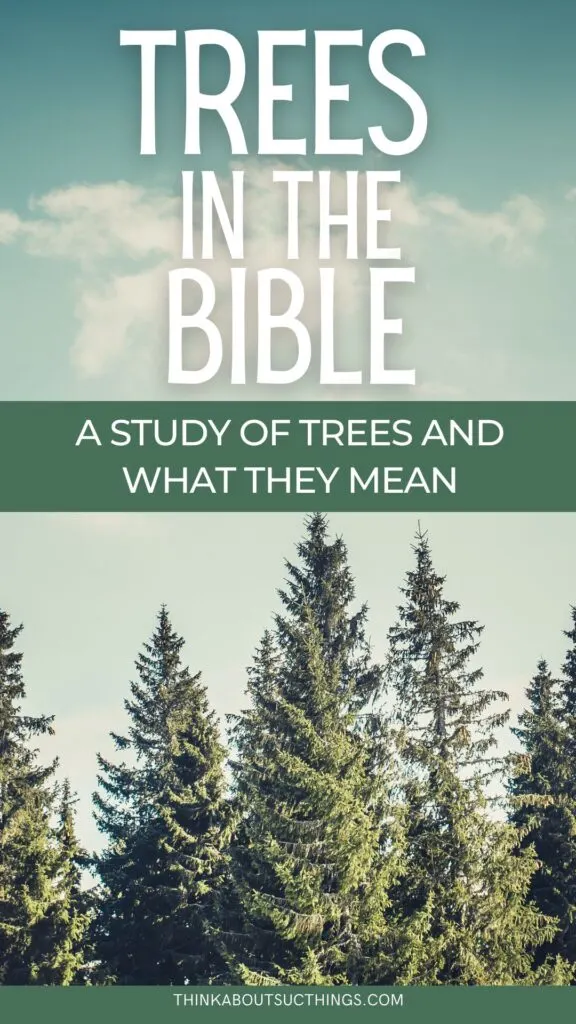
>>Check out : Flowers in the Bible: Symbolism, Meaning, & References & Mountains in the Bible: Symbolism and Significance
What Does The Bible Say About Trees?
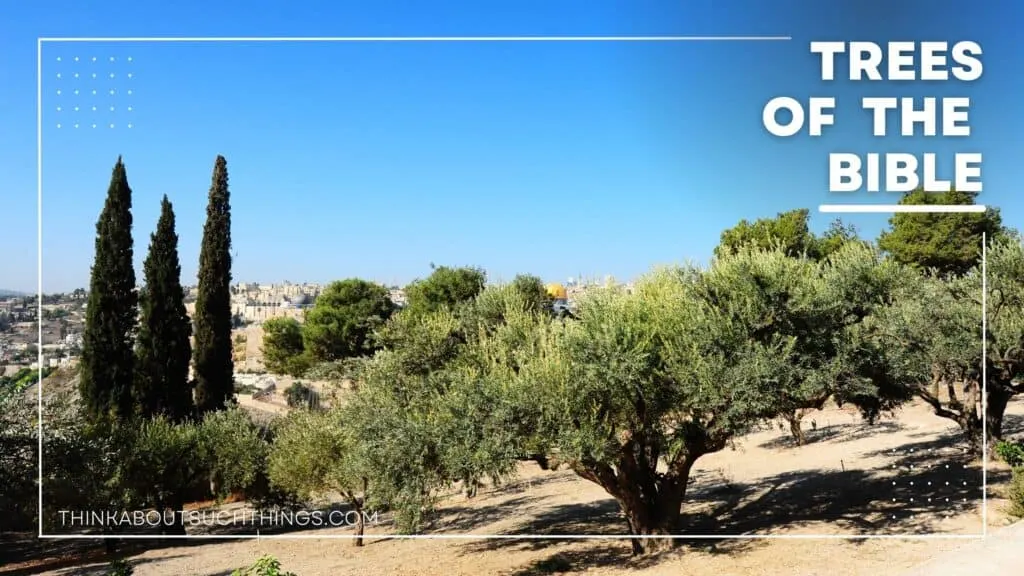
Trees are mentioned numerous times in the Bible, from their creation in the Garden of Eden to being used to build homes and temples. In the Book of Psalms, trees are a symbol of strength, stability, and righteousness.
One of the most famous trees in the Bible is the Tree of Life, which is mentioned in the Book of Genesis and the Book of Revelation. In Genesis, the Tree of Life is located in the Garden of Eden, and it symbolizes eternal life and immortality. In Revelation, the Tree of Life is described as being in the center of the New Jerusalem, and its leaves are said to be for the healing of the nations.
Throughout the Bible, trees are also used to represent people and their spiritual state. One of my favorite psalms paints this beautifully. In Psalm 1, the righteous person is compared to a tree that is firmly planted by streams of water, while the wicked are compared to chaff that is blown away by the wind.
Trees are also used to represent nations and their destiny, such as the cedar of Lebanon, which is used to represent the nation of Israel. Now let’s take a deeper look at specific trees we find in the Old and New Testament.
Trees in the Old Testament
The Old Testament is filled with references to various trees. Now not every tree mentioned in scripture is symbolic or has a deeper spiritual meaning. We have gone over this with numbers in the Bible as well. We must always look at the context of how the tree is being used in scripture.
Let the field be joyful, and all that is in it.
Then all the trees of the woods will rejoice – Psalm 96:12
The Tree of Life
The Tree of Life is mentioned in the Book of Genesis. It is said to have been located in the Garden of Eden, where God placed Adam and Eve. The Tree of Life was a source of eternal life, and eating its fruit would have allowed Adam and Eve to live forever.
However, after they disobeyed God by eating from the Tree of the Knowledge of Good and Evil, they were banished from the Garden and prevented from ever eating from the Tree of Life.
This incredible tree is also mentioned in the Book of Revelation and that once again we will eat from it’s fruit.
The Tree of the Knowledge of Good and Evil
The Tree of the Knowledge of Good and Evil was also located in the Garden of Eden. God commanded Adam and Eve not to eat from it, warning them that if they did, they would surely die.
As most of know it didn’t end well with Adam and Eve. They were tempted by the serpent and ate from the tree, thereby bringing sin and death into the world.
Throughout history the apple has been associated with the tree of the knowledge of good and evil. But scripture never mentioned what kind of fruit the tree produced.
The Cedars of Lebanon
The Cedars of Lebanon are mentioned several times in the Old Testament. They are known for their strength, durability, and beauty.
The cedar was used to build the Temple in Jerusalem and the palaces of many kings. The Psalmist compares speaks of Cedars of Lebanon and so does the prophet Isaiah.
The trees of the Lord are full of sap,
The cedars of Lebanon which He planted,
17 Where the birds make their nests;
The stork has her home in the fir trees. – Psalm 104:16-17

The Olive Tree
The Olive Tree is another tree that is mentioned frequently in the Old Testament and the New Testament. It is known for its fruit, which is used to produce oil.
The oil was used for eating, cooking, lighting lamps, and anointing people for special purposes. The Olive Tree is also a symbol of peace and prosperity. In the Book of Judges 9, the Olive Tree is used to represent the nation of Israel.
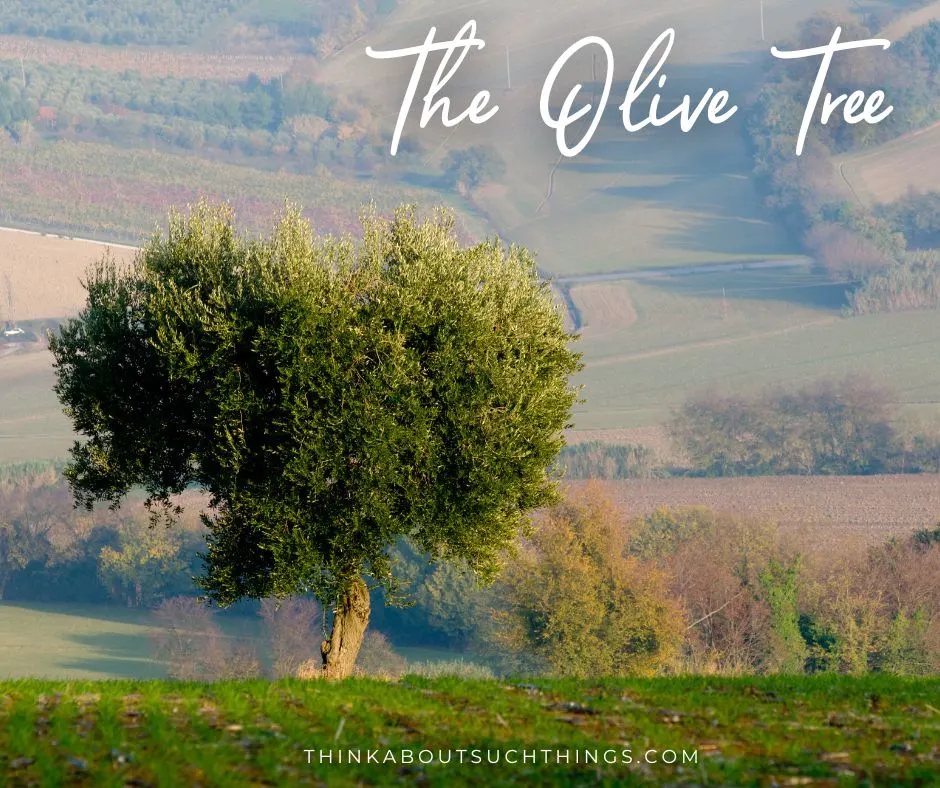
Oaks of Righteousness
The Oaks of Righteousness (trees of righteousness in some translations) are mentioned in the Book of Isaiah. They are a symbol of the righteous people of God, who will be restored and renewed. The Oaks of Righteousness are said to be planted by the Lord, and they will display his splendor. They are a reminder that God will keep his promises and bring salvation to his people.
To grant to those who mourn in Zion the following:
To give them a turban instead of dust [on their heads, a sign of mourning],
The oil of joy instead of mourning,
The garment [expressive] of praise instead of a disheartened spirit.
So they will be called the trees of righteousness [strong and magnificent, distinguished for integrity, justice, and right standing with God],
The planting of the Lord, that He may be glorified. – Isaiah 61:3 AMP
Trees in the New Testament
Let’s head over to the new testament! Here you will see trees being used by Jesus in the parables in His teachings and other stories that make trees quite significant.
In the middle of its street, and on either side of the river, was the tree of life, which bore twelve fruits, each tree yielding its fruit every month. The leaves of the tree were for the healing of the nations. – Revelation 22:2
The Fig Tree
In the New Testament, the fig tree is mentioned several times. And one of the most well-known tree stories is in Matthew 21:18-22 and Mark 11:12-14. It is when Jesus curses a fig tree for not bearing fruit, and it withers away.
There are many ways Christians have looked at this story and what it means. Some believe that the fig tree is a symbol of Israel, while others view it as that Christians should bare fruit in every season.
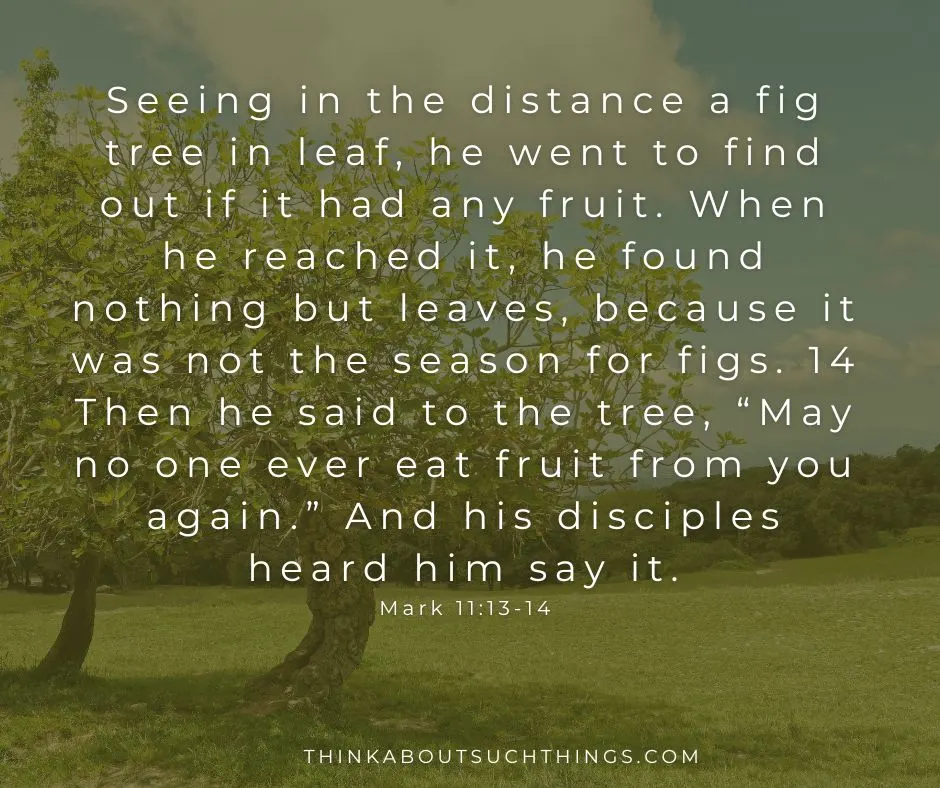
The Mustard Seed Tree
In Matthew 13:31-32, Jesus tells a parable about the mustard seed, which is the smallest of all seeds but grows into a tree large enough for birds to nest in its branches.
I never realized how big a mustard tree could get until I went to Mission San Luis Rey in Oceanside, California. They have a mustard tree in their garden. It is a beautiful large tree.
This parable teaches us that even the smallest amount of faith can grow into something great.
The Sycamore Tree and Zacchaeus
In Luke 19:1-10, we read the story of Zacchaeus, a tax collector who was despised by the people. Zacchaeus climbed a sycamore tree to see Jesus, who was passing through the town.
Jesus saw him and called him down from the tree, and Zacchaeus repented his sins and promised to give half of his possessions to the poor. This story teaches us about hunger for God and that no one is beyond the reach of God’s love and salvation.
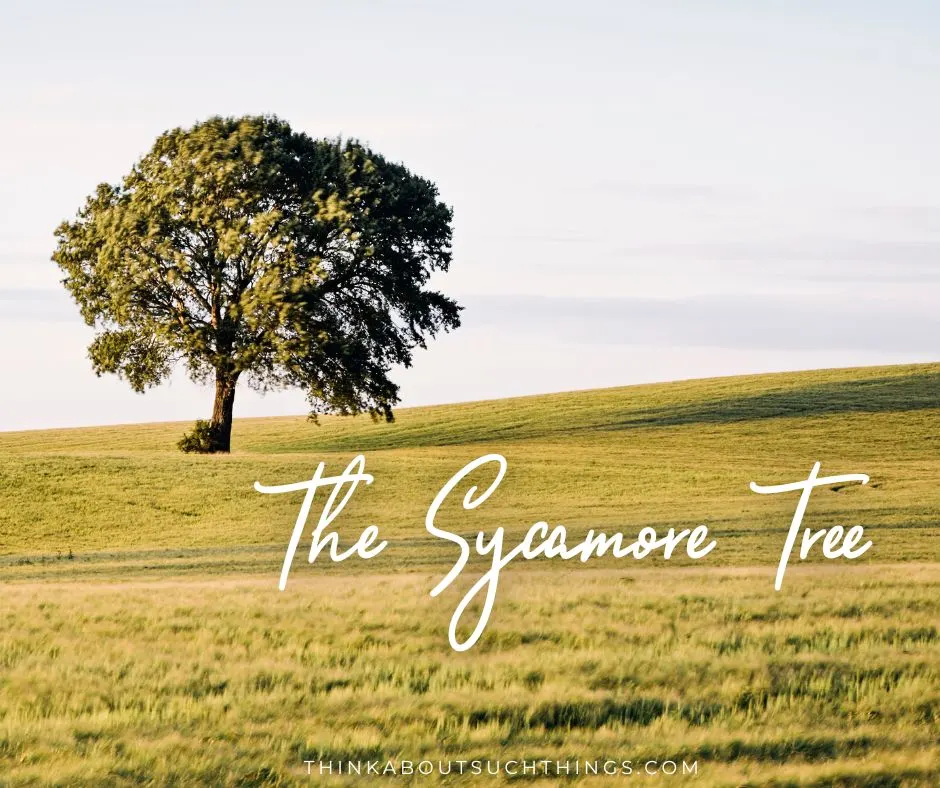
The Tree of Calvary
The most important tree in the New Testament is the tree of Calvary, on which Jesus was crucified.
In Acts 5:30, Peter refers to the cross as a tree, and in Galatians 3:13, Paul writes that Christ redeemed us from the curse of the law by becoming a curse for us, for it is written: “Cursed is everyone who is hung on a tree.”
The tree of Calvary symbolizes the sacrifice of Jesus for our sins and the victory of love over death. Overall, trees in the New Testament serve as powerful symbols of faith, judgment, growth, repentance, salvation, and sacrifice. We can learn from these symbols and apply their lessons to our lives, so that we may bear fruit, grow in faith, repent of our sins, and find salvation through the love of God.
The Symbolism Of Trees In The Bible
Trees are significant in the Bible and are used as symbols to represent various concepts. Let us explore some of the symbolism of trees in the Bible.
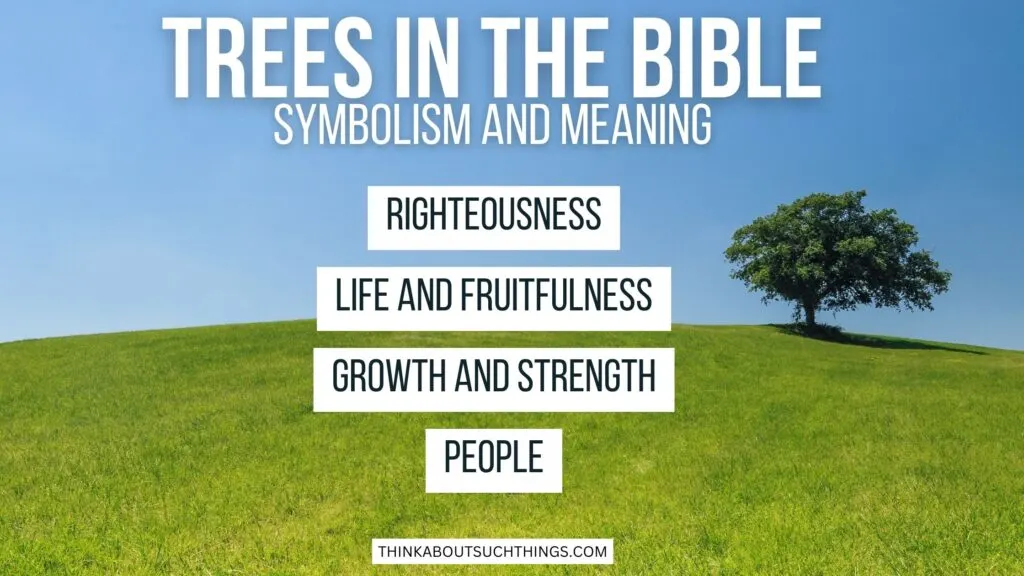
The Tree as a Symbol of Life
The Tree of Life is mentioned in the Bible in the Garden of Eden in Genesis. It is also mentioned in the book of Revelation as a symbol of eternal life. The Tree of Life is a representation of the life that God offers us through His Son Jesus Christ. Just as the tree provides nourishment and sustenance for the body, Jesus provides spiritual nourishment and sustenance for the soul.
The Tree as a Symbol of Wisdom
The Tree of the Knowledge of Good and Evil is another tree mentioned in the Garden of Eden in Genesis. This tree represents the knowledge of good and evil that God did not want Adam and Eve to have.
However, the tree also represents the importance of wisdom and discernment. In Proverbs, the tree of life is associated with wisdom, and those who seek it will find it. (Proverbs 3:18)
The Tree as a Symbol of Righteousness
The righteous are often compared to a tree in the Bible. Psalm 1:3 says, “He is like a tree planted by streams of water, which yields its fruit in season and whose leaf does not wither. Whatever he does prospers.” This tree represents the righteous’s steadfastness and ability to bear fruit even in difficult times. It is a symbol of the strength and stability that comes from a life lived in obedience to God.
Other Spiritual Meaning Of Trees In The Bible
Here are a few other things trees can represent:
- People or leaders – Psalm 1, Isaiah 61, Ezekiel 31:10-14
- Growth and Fruit – Psalm 1, Hope of regrowth -Job 14:7-17
- Judgment (tree being cut down) – Ezekiel 31:10-14, Matthew 7:19
As we wrap up this look at trees in the bible we see that, trees play a significant role in the stories and teachings. From the Garden of Eden to the cross of Jesus, trees are a symbol of life, growth, wisdom and more.
Trees remind us of the beauty and wonder of God’s creation much like all the beautiful flowers He created. As we look at the intricate design and diversity of trees, we are reminded of God’s creativity and power.
We truly serve an amazing God!

Melissa is a passionate minister, speaker and an ongoing learner of the Bible. She has been involved in church and vocational ministry for over 18 years. And is the founder of Think About Such Things. She has the heart to equip the saints by helping them get into the Word of God and fall more in love with Jesus. She also enjoys family, cooking, and reading.
She has spoken in churches in California, Oregon, Texas, and Mexico and has been featured in Guidepost Magazine and All Recipes Magazine. Read More…
